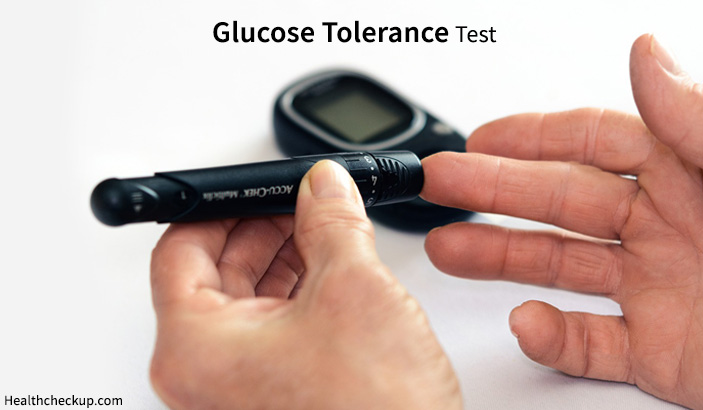Glucose Tolerance Test is a measure of your body’s ability to absorb sugars. The test is done after you have ingested a specific quantity of sugar. Primarily, your medical care professional uses a glucose tolerance test in the diagnosis of gestational diabetes. It is also used in the diagnosis of other types of diabetes and rare disorders.
There are two types of glucose tolerance tests. The first is called the 1-hour glucose tolerance test. In this test, your blood sample is taken twice. One is before you are given a glucose-rich drink, and the second sample is taken 1 hour after you take a sugared drink.
Importance of Glucose Tolerance Test
Undergoing a glucose tolerance test is important for your health and wellbeing. Early diagnosis of diabetes using this test is a lifesaving move. Once you know that you have diabetes, you will be able to avoid life threatening situations such as too high or low blood sugar levels. Type 1 Diabetes that involves high levels of sugar in your blood is quickly diagnosed. On the other hand, type 2 Diabetes develops over a long time and is often seen in adulthood. Type 2 diabetes is the common type of diabetes.
How to Prepare for Glucose Tolerance Test
A scheduled glucose tolerance test needs some preparation on the part of the patient. Before taking a test, there are a number of things your doctor will ask you to do. Of most importance is not eating much or anything at all for a number of hours before taking the test. This allows your attendant doctor to better understand how your body interacts with glucose at varying levels of concentration in your body.
For 8 hours before the glucose tolerance test procedure begins, you should not have had anything to eat, and not much water to drink either. Most people want to have their fast overnight. They schedule their test for early mornings. If you eat anything, make sure that it has minimal carbohydrates in it. For the 3-hour glucose tolerance test, the fasting period could increase to up to 14 hours.
- Glucose tolerance fasting is done with your doctor’s instructions.
- If you are having this test to check for gestational diabetes, you might be allowed a shorter fasting period.
- After you have finished the test procedures and had the last blood sample taken, you are free to eat something to get your energy levels back up.
- It is important to tell your doctor about any medication that you are taking, whether prescription or non-prescription.
Diseases Detected Using Glucose Tolerance Tests
With a glucose tolerance test, a number of diseases related to sugar uptake and metabolism are detected. The two types of diabetes as well as gestational diabetes are detected using glucose tolerance tests. Pre-diabetes is another condition that is detectable using a glucose tolerance test.
Screening using a glucose tolerance test is necessitated by your medical history, current health status and changes that might be happening in your body. Obesity and a history of family members having had diabetes may inform your doctor to request that you undergo the glucose tolerance test. If you have a medical condition that is known to lead to the development of diabetes, the doctor wants to know if you already have diabetes. They may then ask you to have the glucose tolerance test.
Women sometimes have a diabetes-like condition called Gestational Diabetes when they are pregnant. The condition clears after pregnancy. In rare cases, gestational diabetes prevails after pregnancy as one of the 2 types of diabetes. You will at some point be asked to undergo a glucose tolerance test pregnancy as part of ante-natal care.
- It is a common medical practice to screen all pregnant women for gestational diabetes.
- About 9 percent of pregnant women have been found to have gestational diabetes.
- Gestational diabetes is diabetes occurring due to pregnancy but was not present before the lady became pregnant.
- For diagnosis of gestational diabetes, you will undergo a glucose tolerance test after you are at least 24 weeks pregnant and not more than 28 weeks pregnant.
Glucose Tolerance Test Procedure
The procedure for testing glucose tolerance is simple and quite straightforward. In the days preceding your test, you are allowed to consume your normal diet. It is on the day before the test that you should fast with the guidance of your doctor. The timing must also be synchronized and arrived at after all involved medical care personnel involved in the test have been consulted.
For the 1 hour glucose tolerance test, a sample is taken before you are given anything to drink. The doctor then gives you a 237 milliliters solution or drink. The solution or syrup has that has not less than 75 grams of glucose for diagnosis of gestational diabetes. For the diagnosis of other types of diabetes, the syrup administered has 100 grams of glucose. After an hour of taking the syrup, another sample of your blood is taken for analysis.
- The 3-hour glucose tolerance test procedure varies from the 1 hour glucose tolerance test in the number of samples taken.
- In the 3-hour test, a sample is taken every hour, for 3 hours.
- The 3-hour test procedure gives your doctor 4 test results to guide the next medical step.
Glucose Tolerance Test Results and Interpretation
The results of glucose tolerance test are read in Millimoles per Liter (mmol/L) or Milligrams per Deciliter (mg/dL). The normal and abnormal ranges vary for pre-diabetes, Diabetes, and Gestational Diabetes.
The glucose tolerance test normal range starts at 92 mg/dL for gestational diabetes. If after taking some glucose and staying for one hour you have a reading of more than 180 mg/dL, then you have gestational diabetes. After 2 hours, the benchmark value goes down to 153 mg/dL. In the third hour, your blood sugar level should go below 140 mg/dL
While testing for diabetes, your glucose tolerance test normal range is 126 mg/dL while fasting. Two hours after taking a glucose solution in the glucose tolerance test procedure, your blood sugar level should be lower than 140 mg/dL.
- If you have a blood glucose level of more than 140 but not exceeding 199mg/dL, you have pre-diabetes.
- Any value of more than 200mg/dL in your glucose tolerance test results and interpretation indicates diabetes.
- Pre-diabetes is also diagnosed if you have a fasting blood sugar level of between 100 and 125 mg/dL.
How Long does A Glucose Tolerance Test Take?
Your whole glucose tolerance levels test including the test procedure takes a very short while. The results of a glucose tolerance test are out within minutes. The 1 hour test only requires you to give a blood sample and then you can leave soon after. With the 3 hour glucose tolerance test, you can spend up to 5 hours in the medical care facility. This is because a sample must be taken from you with each passing hour.
There are very few risks involved in a glucose tolerance test. You may get some bleeding or be bruising as the sample is being drawn. Due to not eating for some time, you may feel a little lightheaded or dizzy. The bruising, bleeding, lightheadedness and dizziness all clear after some time. Once the glucose tolerance test procedure is over, you are allowed to eat.
Medically Reviewed By

Professionally, a trained Microbiologist and Plant operator, Eustace is an experienced health content writer who is passionate about helping people lead a healthy life.









